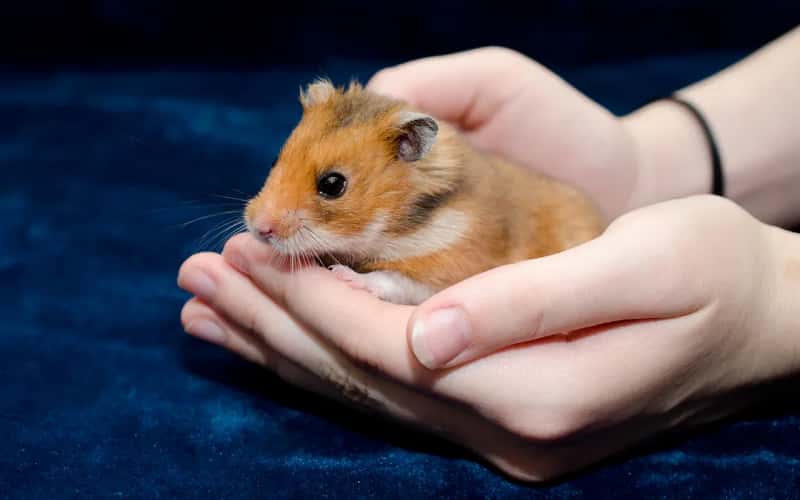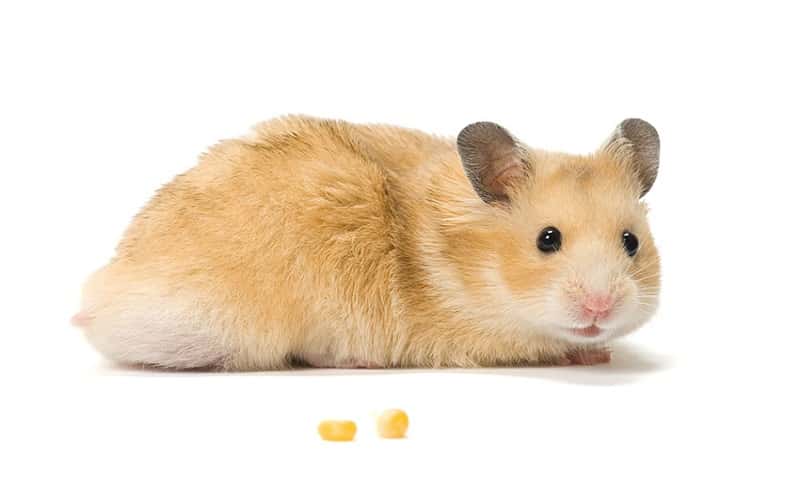Syrian hamsters, the charming creatures scientifically known as Mesocricetus auratus, have piqued the interest of pet enthusiasts worldwide with their captivating characteristics and manageable care requirements. This comprehensive guide offers an in-depth exploration of their origins, attributes, and essential care guidelines, serving as an invaluable resource for both novice and experienced hamster guardians.
Origins and General Information
Originating from the arid regions of the Middle East, specifically Syria and parts of Turkey, Syrian hamsters have a rich history as solitary creatures. Their discovery in the 18th century marked the beginning of their journey as beloved companions, thanks to their gentle disposition and relatively straightforward upkeep.
Syrian Hamster Attributes
Appearance: Sporting a compact body, short legs, and a plush fur coat that comes in a myriad of colors and patterns.
Characteristics: While individual personalities may differ, Syrian hamsters are predominantly solitary, preferring a life of solitude to avoid potential conflicts.
Popularity: Renowned for their mild temperament and ease of care, Syrian hamsters have secured a spot as one of the most popular hamster species kept as pets.
Temperament: Generally mild-mannered, though their tolerance for handling can vary.
Lifespan: With proper care, these hamsters can enjoy a lifespan of around 2 to 3 years.
Coat Color: Their coat colors span a wide spectrum, including the golden, black, cream, and cinnamon varieties, each contributing to their unique allure.
Types of Syrian Hamsters: Notable variations encompass the Golden Syrian, Black Syrian, Cream Syrian, and Tortoiseshell Syrian.
II. How to Take Care of a Syrian Hamster
Food:
Example 1: Nutrient-rich hamster pellets serve as a well-rounded diet, supplying essential protein, fiber, and vitamins.
Example 2: Fresh vegetables like carrots and broccoli supplement their diet with additional vitamins and hydration.
Example 3: Including Timothy hay aids in digestion and supports proper dental health.
Environment:
Example 1: Provide a spacious cage with a minimum of 450 square inches of floor space, allowing ample room for exploration.
Example 2: Opt for suitable bedding materials such as aspen shavings or paper-based bedding to ensure both comfort and hygiene.
Example 3: Furnish the cage with hiding spots and tunnels, facilitating a safe and stimulating environment.
Grooming:
Example 1: Regular nail trimming prevents overgrowth and potential discomfort.
Example 2: Occasional dust baths aid in maintaining fur cleanliness and removing excess oils.
Example 3: Inspect the fur for tangles and matting, using a gentle brush to maintain its condition.
Take Care Method:
Establish a daily routine of interacting with your hamster, fostering a strong bond. Gentle handling and supervised playtime outside the cage contribute to their overall well-being and contentment.
III. How to Buy/Adopt a Syrian Hamster
Popularity Locations: Syrian hamsters can be found in pet stores, sourced from private breeders, and adopted from animal shelters across the globe.
Average Price: The cost can range between $10 and $20, influenced by factors like coat color and hamster type.
Adoption/Rescue Communities: Notable options include “Hamster Haven” in the United Kingdom and “Small Angels Rescue” in the United States.
Pre-Adoption Checklist:
General Health: Opt for active hamsters with clear eyes and well-groomed coats.
Vaccination Status: Generally, Syrian hamsters do not require vaccinations, but inquire about any prior veterinary care.
Medical History: Gathering information about their medical history will help you anticipate potential health concerns.
IV. How to Prepare for a Syrian Hamster’s Life
Advice:
Conduct thorough research and gather necessary supplies before bringing your hamster home.
Create a cozy habitat within the cage, complete with enriching elements.
Introduce both mental and physical stimulation through toys, tunnels, and a suitable exercise wheel.
Essential Equipment:
A well-ventilated cage with ample space
A noiseless exercise wheel for physical activity
Chew toys to support dental health
Common Diseases:
Wet Tail: Focus on maintaining hygiene and reducing stress to prevent this severe condition.
Respiratory Infections: Ensure proper ventilation and eliminate drafts to minimize the risk of respiratory issues.
Dental Problems: Provide wooden toys and hay to promote healthy teeth.
Necessary Vaccines: Generally, Syrian hamsters do not require vaccinations.
Foods to Avoid:
Citrus Fruits: Their high acidity can disrupt digestion.
Sugary Treats: Excessive sugar consumption can lead to obesity and dental problems.
Processed Foods: Opt for natural, hamster-specific foods to ensure their well-being.
V. Common Names for Syrian Hamsters
Naming Advice: Opt for a name that resonates with their personality or appearance, while favoring simple and easily pronounceable names.
Common Names:
Charlie
Bella
Peanut
Daisy
Max
In summary, Syrian hamsters provide a rewarding and enriching pet experience. Understanding their origins, traits, and care requirements equips you with the knowledge necessary to ensure a fulfilling life for these captivating companions.
VI. FAQ about Syrian Hamsters
How many types of Syrian Hamsters? Notable variations include Golden, Black, Cream, and Tortoiseshell Syrians.
How to Train Your Syrian Hamster? Gradually introduce handling and use treats to reinforce positive behavior.
Are Syrian Hamsters Good Family Pets? While suitable for families with older children, proper handling requires supervision.
How long can a Syrian Hamster Live? With proper care, Syrian hamsters can enjoy a lifespan of approximately 2 to 3 years.
 Syrian hamsters
Syrian hamsters
 Syrian hamsters
Syrian hamsters

Source: https://petscaretip.com/
Why is my Syrian Hamsters Squeaking?
Syrian hamsters may squeak for various reasons, including expressing their emotions such as excitement, fear, or pain, communicating with other hamsters, or feeling stressed or uncomfortable.
It’s essential to observe their behavior and surroundings to determine the cause of the squeaking and address any potential issues, such as providing them with adequate space, food, and toys, or taking them to a veterinarian if necessary.
How to Tame Syrian Hamsters?
To tame Syrian hamsters, start by offering them small amounts of food from your hand each day to build trust. Once they feel comfortable taking food from you, try petting them gently and offering more interaction.
Gradually increase the amount of time you spend with them each day, and avoid sudden movements or loud noises that might scare them. With patience and consistency, most Syrian hamsters can become tame and friendly pets.
Why is my Syrian Hamsters Sleeping At Night?
Syrian hamsters are nocturnal animals, which means they are naturally inclined to be active during the night and sleep during the day. Therefore, it is normal for your Syrian hamster to sleep at night. Additionally, they typically require 12-14 hours of uninterrupted sleep each day to maintain their health and well-being.
Why is my Syrian Hamsters not Drinking Water?
There could be several reasons why your Syrian hamster is not drinking water.
The water source may not be easily accessible to the hamster. Make sure that the water bottle or bowl is properly installed and placed in a location where the hamster can easily reach it.
The water may be contaminated or have an unpleasant taste. Try changing the water frequently, using filtered or bottled water, or adding a few drops of unsweetened fruit juice to make the water more appealing.
Your hamster may be getting enough hydration from its food. Hamsters get some of their water intake from the fruits and vegetables they eat, so if you are feeding your hamster a balanced diet, they may not need to drink as much water.
Your hamster may be ill or stressed. In this case, take your hamster to a veterinarian as soon as possible for a check-up.
It’s important to monitor your hamster’s water intake and provide fresh, clean water regularly to ensure their health and well-being.
Why do Syrian Hamsters Bite Their Cage?
Syrian hamsters may bite their cage out of boredom, stress, frustration, or a lack of exercise. They are active animals and require plenty of opportunities to explore and play. Providing them with enough space, toys, and hiding places can reduce the likelihood of cage-biting behavior.
Additionally, handling and interacting with your hamster regularly can help them feel more comfortable and less stressed in their environment.
Why is my Syrian Hamsters So Small?
There are several reasons why a Syrian hamster may be small. One possibility is that it is simply a smaller breed or individual within the breed. Another possibility is that it may not be receiving adequate nutrition, either due to insufficient amounts or poor quality food.
Finally, health issues such as parasites or dental problems can also affect a hamster’s growth and overall size. If you are concerned about your hamster’s size, it is best to consult with a veterinarian who can provide a proper diagnosis and treatment plan.
Why is my Syrian Hamsters Losing Hair?
Syrian hamsters can lose hair due to various reasons such as genetics, old age, stress, poor nutrition, skin infections, and parasites. It’s essential to observe the hamster’s behavior and diet and consult a veterinarian if the hair loss is excessive or accompanied by other symptoms like itching, scabs, or redness.
Providing a balanced diet, maintaining a clean living environment, minimizing stressors, and treating any underlying health issues can help prevent hair loss in Syrian hamsters.
Why is my Syrian Hamsters Turning Grey?
There could be several reasons why your Syrian hamster is turning grey, including age, genetics, stress, or illness. As hamsters age, their fur can naturally change color and become lighter. Additionally, some hamsters may have genes that cause their fur to turn gray prematurely.
Stress can also impact a hamster’s fur color, as well as their overall health. If your hamster is living in an environment that is too noisy or crowded, or if they are not receiving proper nutrition or care, this could lead to changes in their fur.
Finally, illness can also cause changes in fur color. If your hamster is showing other symptoms such as lethargy, loss of appetite, or difficulty breathing, it is important to take them to a veterinarian for a proper diagnosis and treatment.
Overall, it is important to closely monitor your hamster’s behavior and appearance, and provide them with a comfortable and healthy living environment to ensure their wellbeing.
